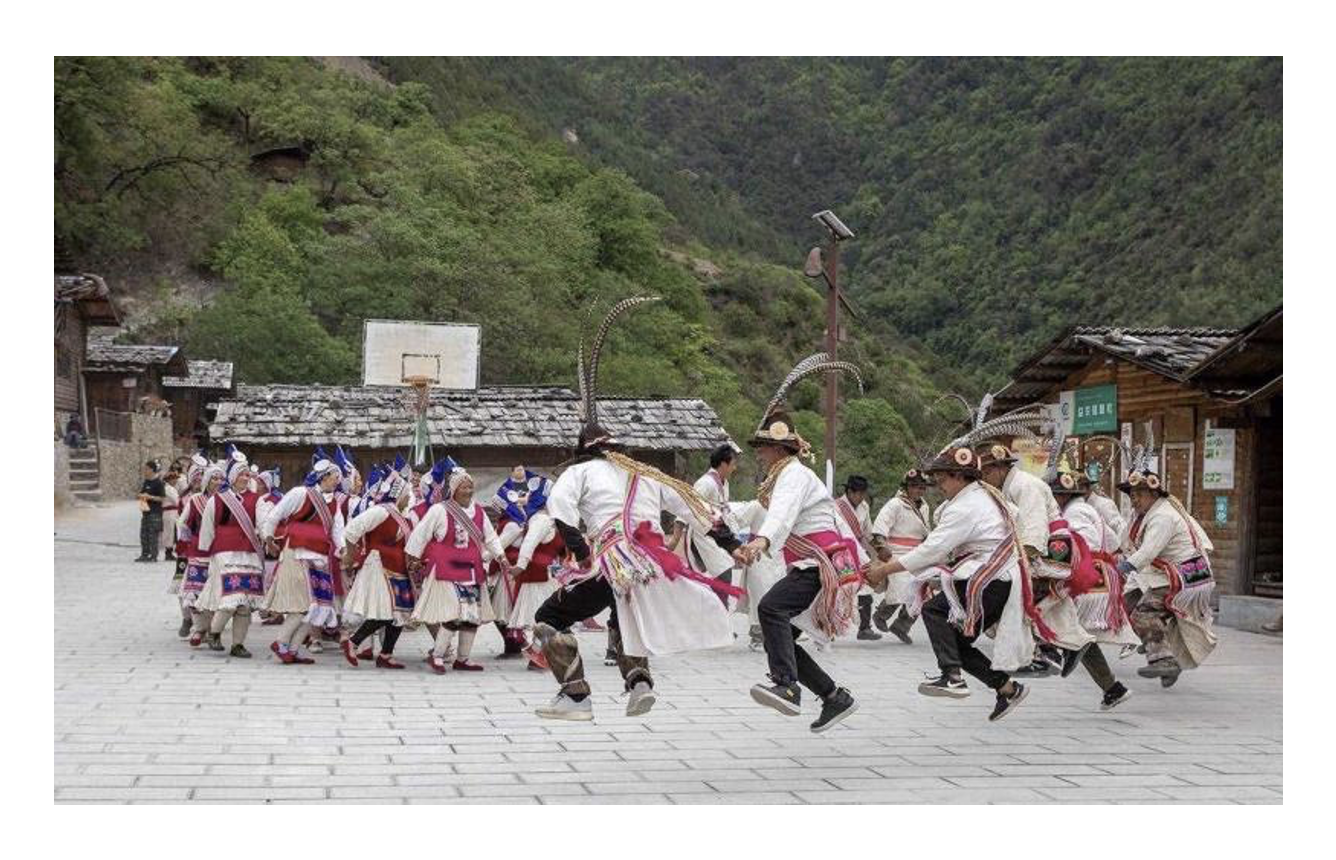THE 'ACHIMU GUA' DANCE OF THE LISU ETHNIC GROUP IN THE CONTEXT OF DANCE ECOLOGY
Main Article Content
บทคัดย่อ
This study the “Achimu Gua” dance of the Lisu ethnic group from the perspective of dance ecology. Qualitative analysis results were obtained through interviews, observational research, and literature review with research subjects including dance inheritors, expert scholars, and performers of the Lisu ethnic group.
The research findings reveal that:
The “Achimu Gua” dance of the Lisu ethnic group has gradually evolved from their long history of production and has been deeply influenced by the cultural and social environment of Weixi. This dance originates from the daily lives of the Lisu people and serves as a form of self-entertainment. The “Achimu Gua” dance encompasses a variety of dance movements, each reflecting the optimism and resilience of the Lisu people in the face of challenging living conditions. The Lisu people incorporate elements of goat sounds and appearance into their dance, expressing reverence for nature and reflecting their traditional customs. The simple and authentic dance movements in the “Achimu Gua” dance, as well as the imitation of the goat's way of life, convey a profound and beautiful emotional connection between the Lisu people and their natural surroundings.
By studying the Lisu ethnic group's “Achimu Guo” dance within the framework of dance ecology, this research provides valuable insights for delving deeper into the diversity of ecological dances and promoting sustainable ecological education. This study enhances our understanding of the intricate relationship between the Lusu ethnic group's “Achimu Guo” dance and its ecological environment, offering robust support for the development, preservation, and protection of this dance. Furthermore, it ignites further in-depth research and discussions about Lisu culture.
Article Details

อนุญาตภายใต้เงื่อนไข Creative Commons Attribution-NonCommercial-NoDerivatives 4.0 International License.
** ข้อความ ข้อคิดเห็น หรือข้อค้นพบ ในวารสารสหวิทยาการสังคมศาสตร์และการสื่อสารเป็นของผู้เขียน ซึ่งจะต้องรับผิดชอบต่อผลทางกฎหมายใด ๆ ที่อาจเกิดขึ้นจากบทความและงานวิจัยนั้น ๆ โดยมิใช่ความรับผิดชอบของคณะนิเทศศาสตร์ มหาวิทยาลัยราชภัฏรำไพพรรณี **
เอกสารอ้างอิง
China Folk Dance Integration Editorial Committee. (2000). Chinese Folk Dance Integration - Yunnan Volume. China ISBN Center Publishers.
Lu, J. B., & Ou, G. M. (2014). Lisu People. Liaoning Nationalities Publishing House.
Weixi Lisu Autonomous County Cultural and Sports Bureau, ed. (2010). Catalog of Intangible Cultural Heritage of Weixi Lisu Autonomous County. Yunnan Nationalities Publishing House.
Yousef, K. (2015). Natural Dance: An Introduction to Dance Ecology. Columbia University Press.
Zi, H. J., & Wang, N. (2012). Dance Ecology. Culture and Art Publishing House.
Lu Jianbiao, Ou Guangming. (2010). Research on Lisu Culture. Nationalities Publishing House.
Editorial Department of Anthology of Chinese Folk Dances. (1999). Anthology of Chinese Folk Dances· Yunnan. China ISBN Center.
Qin Heping. (2010). A Concise History of the Lisu People. Nationalities Publishing House.


